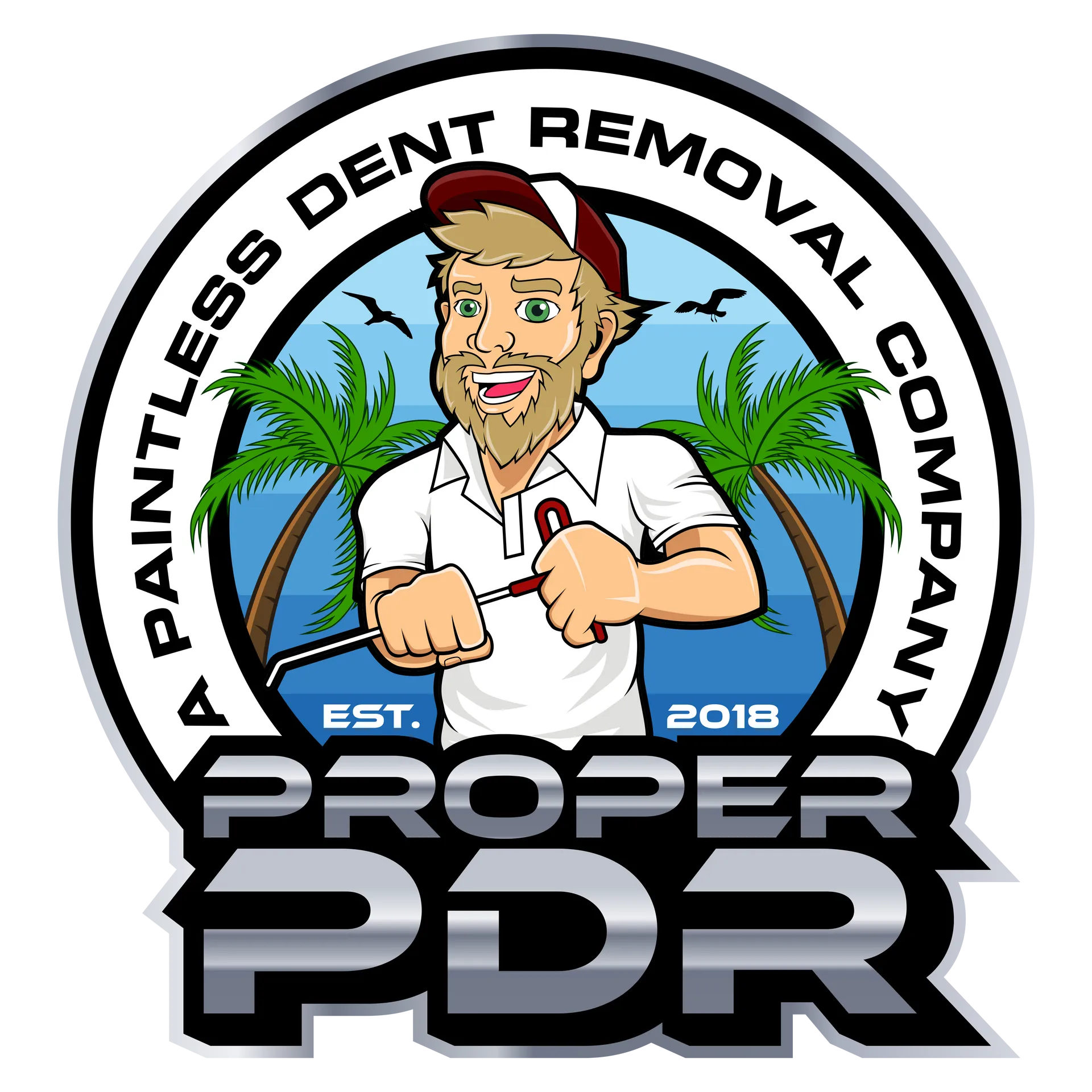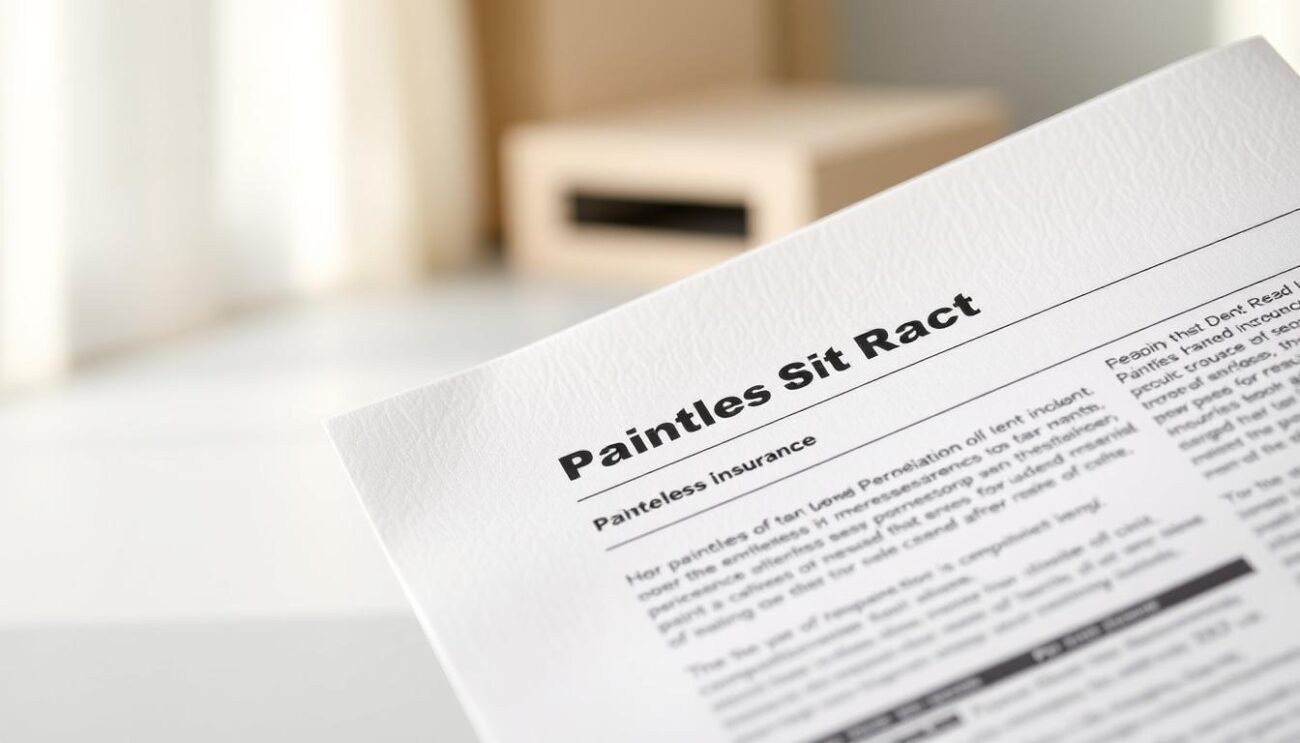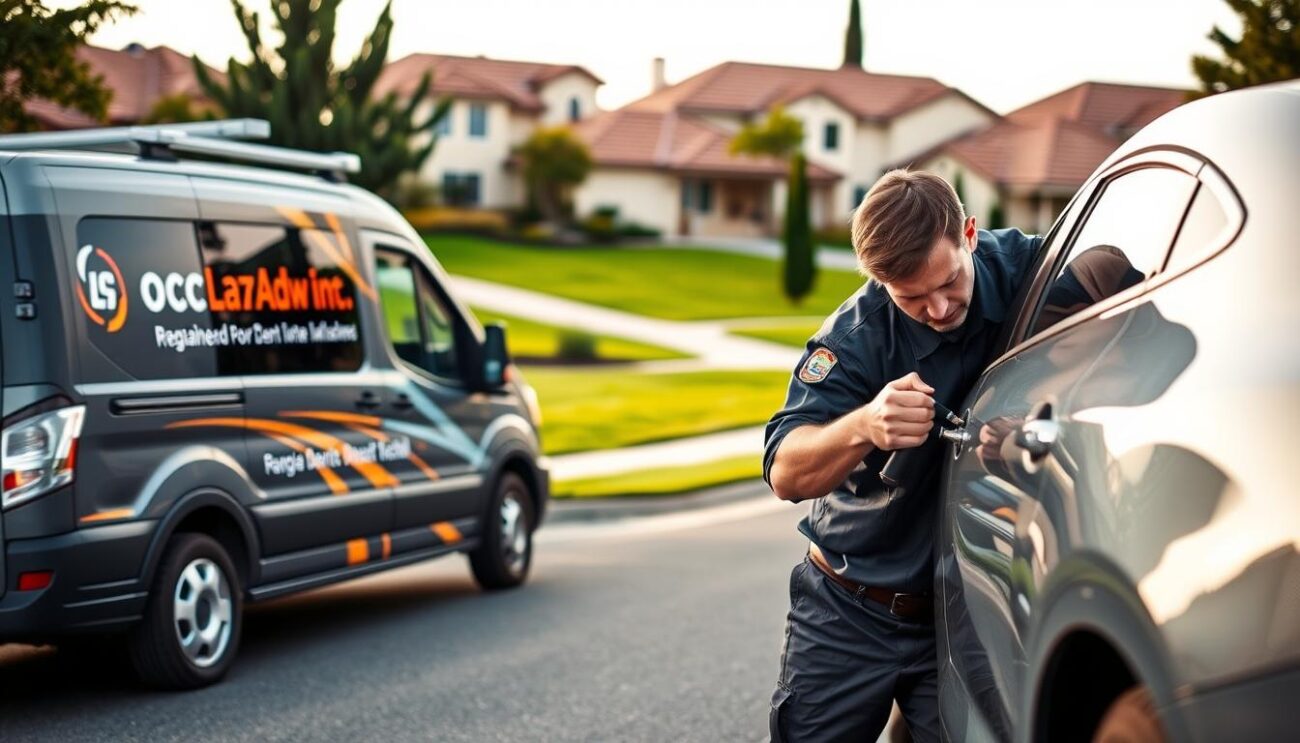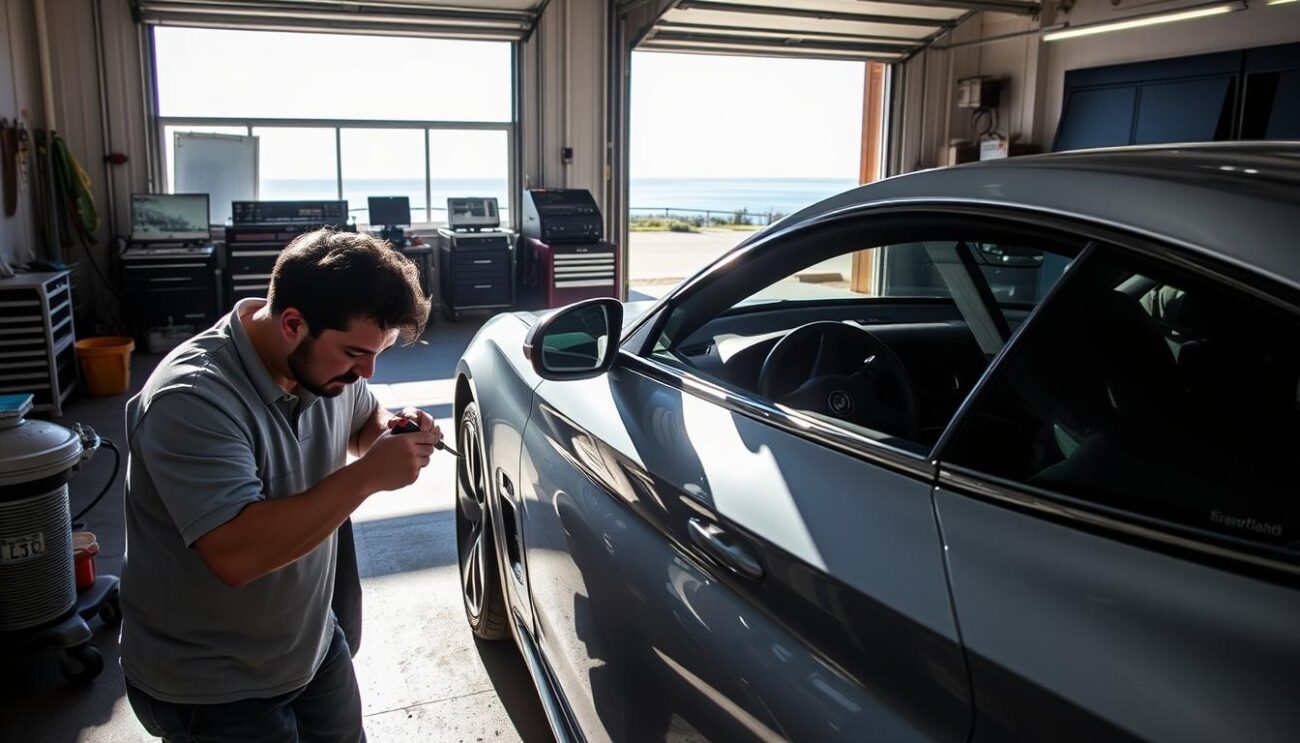
Blog
What Is Paintless Dent Repair (PDR) and How Does It Work?
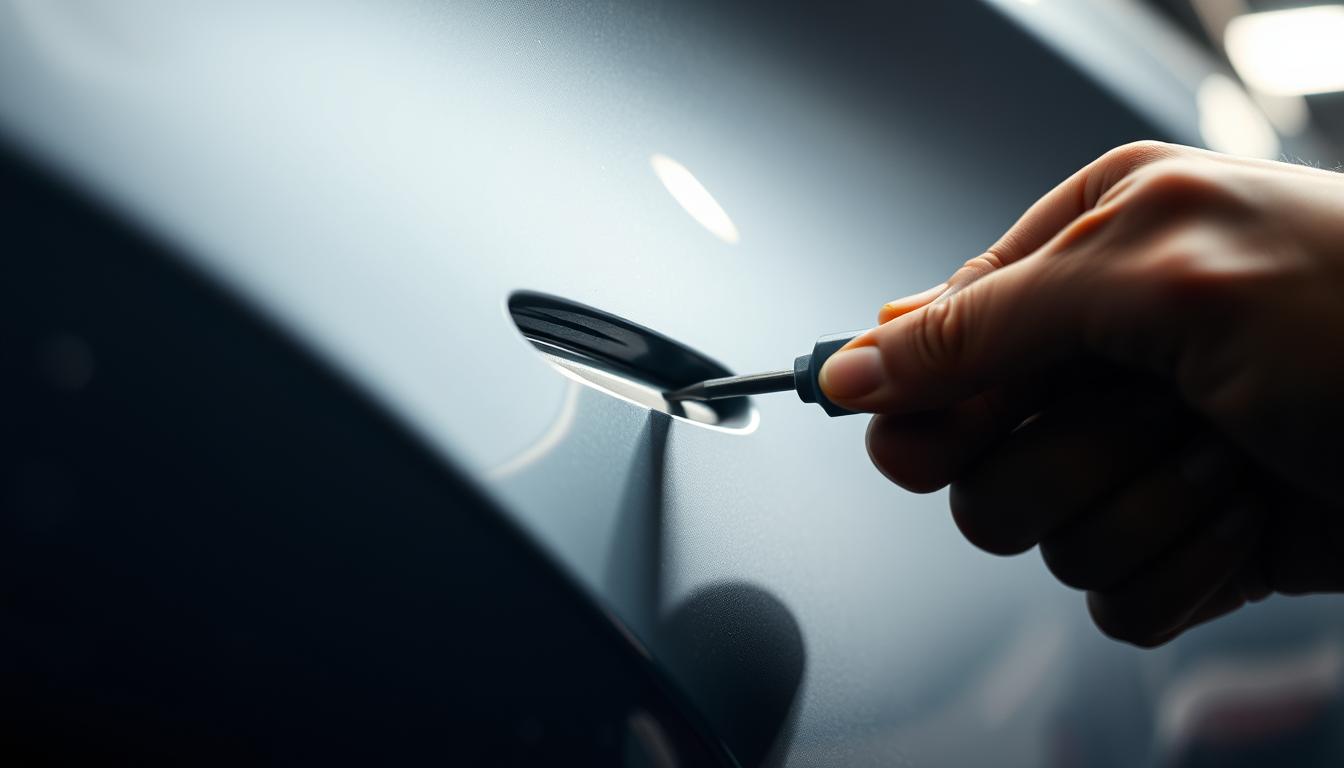
Modern auto care has evolved with techniques that fix minor imperfections while keeping your vehicle’s original finish intact. One standout method reshapes metal panels without sanding or repainting, making it a favorite among car owners and insurers alike.
This approach relies on precision tools to massage dents from behind the panel. Skilled technicians apply controlled pressure, coaxing the metal back to its factory shape. The secret lies in metal memory—the material’s tendency to return to its original form when properly manipulated.
Common issues like door dings, hail marks, and shallow creases often qualify for this treatment. Unlike traditional methods, there’s no filler or paint matching required. This preserves your car’s value and avoids lengthy shop visits—most jobs finish in hours, not days.
Curious why this solution keeps gaining traction? It’s faster, cheaper, and maintains the manufacturer’s coating that protects against rust. Plus, it’s eco-friendly since no chemicals or excess materials get used during the process.
Next time a shopping cart kisses your fender or a hailstorm leaves dimples, remember: there’s a smarter way to restore your ride’s smooth appearance without compromising its integrity.
Introduction to Paintless Dent Repair
Car owners now have access to innovative solutions that maintain their vehicle’s appearance while saving time and money. Let’s unpack how this modern approach works and why it’s transforming auto care.
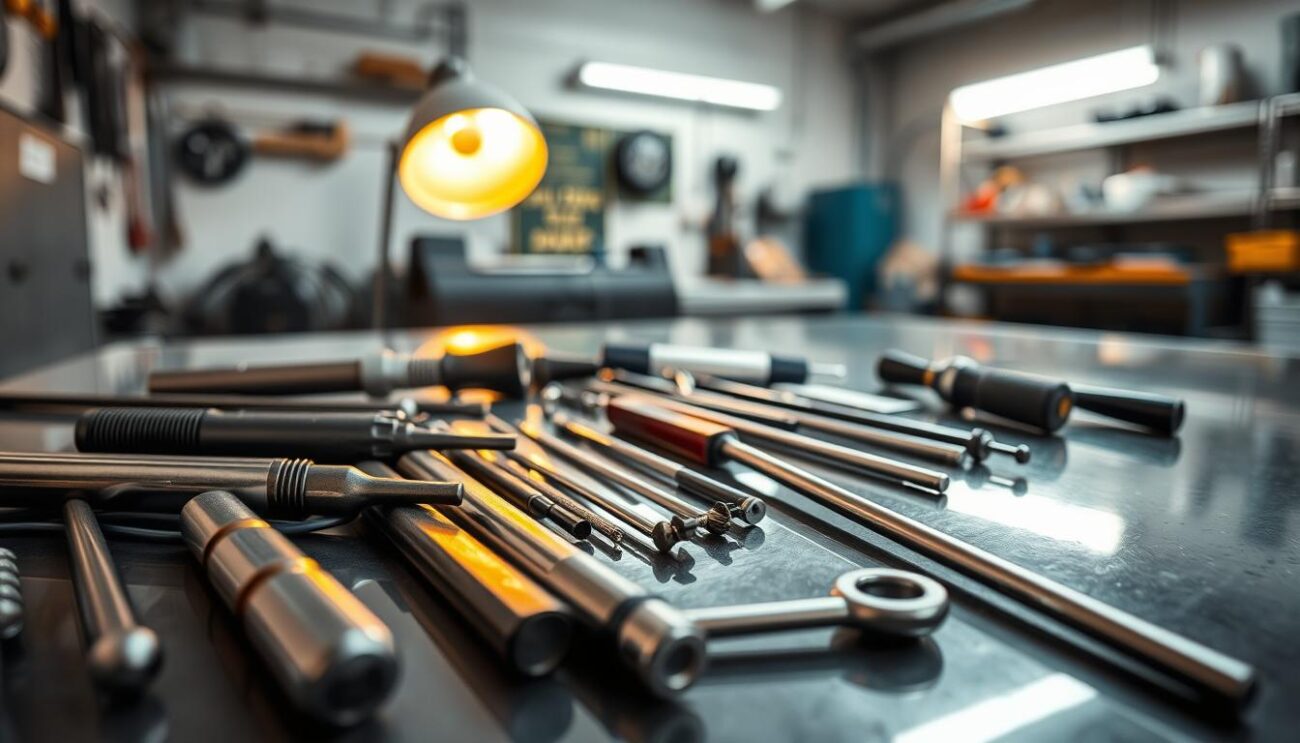
Defining the PDR Technique
Specialists use slender metal rods and custom tabs to gently reshape damaged areas from behind panels. High-intensity LED lights reveal even subtle imperfections, allowing technicians to work with surgical precision. This method leverages the metal’s natural flexibility, coaxing it back into shape without compromising factory paint.
Common fixes include door dings, hail damage, and minor creases—as long as the surface coating remains unbroken. Unlike conventional methods, there’s no sanding, fillers, or color blending. The result? Your ride looks factory-fresh in hours rather than days.
Why PDR is a Game-Changer for Car Owners
Cost savings stand out immediately—repairs often cost half what traditional shops charge. Since original paint stays intact, resale value remains higher compared to repainted surfaces. Quick turnarounds mean less time without your vehicle, perfect for busy schedules.
Environmentally conscious drivers appreciate the lack of toxic chemicals or wasted materials. Insurance companies frequently favor this approach too, recognizing its efficiency and quality results. Next time minor damage strikes, remember: there’s a smarter fix that keeps your auto looking sharp.
Benefits and Cost Savings of Paintless Dent Repair
Smart solutions now let drivers fix dents without breaking the bank or their schedule. This modern approach combines efficiency with long-term value, making it a win for wallets and car enthusiasts alike.
Saving Time and Money
Costs drop by 25-50% compared to conventional methods, thanks to streamlined processes. Technicians complete most jobs in hours using specialized tools—no waiting for paint to dry or parts to arrive. Insurance providers often approve these claims faster, cutting rental car expenses.
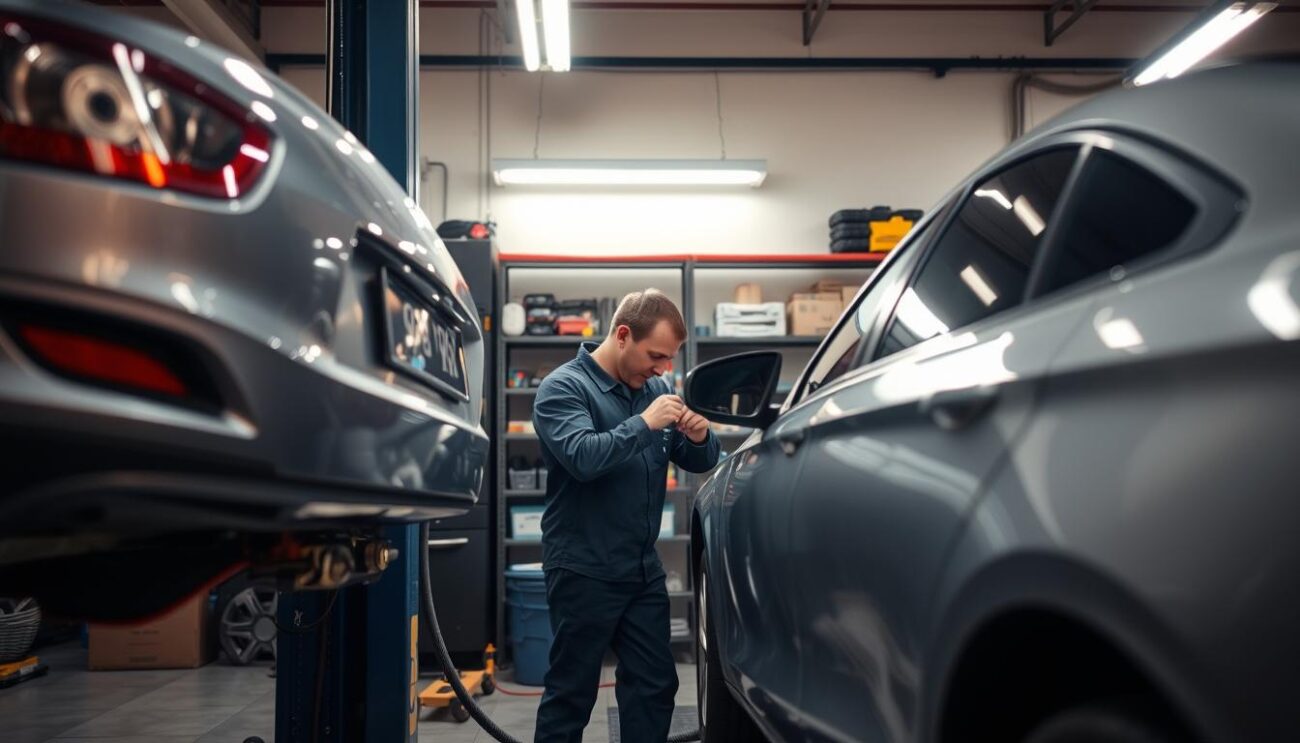
Traditional shops might take days for similar work, requiring disassembly and repainting. Here, metal gets reshaped while preserving the original factory coating. Less labor and materials mean lower bills—and more cash stays in your pocket.
Preserving Your Vehicle’s Original Value
Factory-applied paint matters when selling or trading. Buyers pay more for untouched surfaces since repainted areas can signal hidden damage. This technique avoids color mismatches and overspray issues that plague standard fixes.
Environmental perks add another layer of value. No solvents or fillers enter landfills, making it a greener choice. Your ride retains its authentic look while staying eco-friendly—a double victory for conscious drivers.
The PDR Process: Tools, Techniques, and Steps
Transforming a dented panel back to its original state requires both artistry and cutting-edge technology. Experts follow a meticulous sequence to ensure flawless results while preserving your vehicle’s factory finish.
Damage Assessment and Tool Selection
Technicians begin by analyzing the dent’s depth and location using digital scanning tools that map imperfections. These devices display real-time 3D models, helping pros choose the right rods or tabs for each unique curve. Access points get identified—sometimes requiring temporary removal of interior panels or trim pieces.
Shallow dings might need flexible glide rods, while deeper creases demand sturdier hammers. Modern kits include ergonomic handles with pressure sensors—preventing overcorrection. Special lighting systems reveal hidden flaws, ensuring no detail gets overlooked during preparation.
Dent Manipulation and Quality Control
Using precise pushing and massaging motions, technicians coax metal back into shape from behind the panel. Gradual adjustments maintain structural integrity, letting the material’s memory do most of the work. Real-time feedback from smart tools helps avoid stretching or thinning the surface.
Final inspections involve multi-angle LED lights and touch checks. Any remaining waves get addressed with micro-adjustments until the surface feels smooth. This attention to detail guarantees repairs blend seamlessly with surrounding areas, leaving no trace of the original damage.
What Is Paintless Dent Repair (PDR) and How Does It Work?
Restoring a vehicle’s sleek appearance doesn’t have to involve invasive procedures or lengthy waits. Let’s break down how experts tackle dents while keeping your auto’s finish untouched.
Step-by-Step Overview of the PDR Method
Technicians start by mapping the dent’s exact dimensions using digital gauges. This reveals whether the metal can return to its original shape without paintwork. Next, they pick specialized tools—like curved rods or adhesive tabs—based on the damage’s depth and location.
Accessing the dent’s backside often requires removing trim panels or lights. Once inside, pros apply gradual pressure to massage the metal upward. This leverages its natural memory—the tendency to snap back when manipulated correctly. Final checks ensure no ripples remain before reassembling components.
Ideal Conditions for Successful Repair
Not every dent qualifies for this approach. The surface coating must remain intact, with no cracks or scratches. Shallow damage under 3 inches wide typically responds best. Deep creases or sharp folds might need traditional methods.
| Factor | PDR-Friendly | Traditional Repair |
|---|---|---|
| Paint Condition | Undamaged | Requires repainting |
| Dent Depth | Shallow (under 1″) | Deep/Complex |
| Time Required | 2-4 hours | 2-5 days |
Skilled technicians matter most. Their ability to “read” the metal’s behavior ensures smooth results. When done right, this method leaves your ride looking factory-fresh—no evidence of the mishap remains.
Choosing a Qualified PDR Technician
Finding the right professional for your car’s needs requires careful evaluation of their expertise and track record. Not all repair providers deliver the same results—selecting someone skilled ensures your vehicle stays in top shape.
Certifications and Experience to Look For
Industry certifications separate seasoned experts from amateurs. Look for credentials from organizations like the National Alliance of Paintless Dent Repair Technicians. These programs test skills in metal manipulation and modern repair methods.
Experience matters just as much. Technicians with 5+ years in the job typically handle complex dents confidently. Ask how many vehicles similar to yours they’ve repaired. Check online reviews for consistency in quality paintless dent repairs.
| Factor | Certified Technician | Uncertified Provider |
|---|---|---|
| Training | 300+ hours | Self-taught |
| Insurance Coverage | Full liability | Limited or none |
| Warranty | Lifetime guarantee | 30-day policy |
Always verify insurance and warranties. Reputable shops protect your vehicle during the work process. Location-based services often offer mobile repairs, but ensure they use proper tools onsite.
Top-tier experts attend annual workshops to master new materials like aluminum panels. This dedication to learning translates to better results for your ride. Choose wisely—your car’s value depends on it.
Common Misconceptions and DIY Challenges
Myths about auto body solutions often leave car owners confused about their best options. Let’s clear the air about what really works—and what doesn’t—when dealing with minor vehicle damage.
Debunking PDR Myths
Size limitations get exaggerated. While shallow dents respond best, skilled technicians can address larger areas if the paint remains unbroken. Metal’s natural flexibility allows reshaping without sanding or repainting—contrary to claims that fresh coatings are mandatory.
Another falsehood suggests home kits match professional results. Store-bought tools lack the precision instruments and trained touch needed for seamless corrections. Attempting self-repair often creates new flaws, costing more to fix later.
Why DIY PDR May Not Deliver Professional Results
Metal behaves unpredictably without proper training. Amateurs might stretch or thin panels while pushing out dents, creating visible waves. Hidden access points also challenge weekend warriors—experienced pros know how to navigate tight spaces behind lights or trim.
Specialized lighting systems reveal imperfections invisible under garage fluorescents. Without these tools, DIYers miss subtle ripples that pros eliminate during final inspections. When damage involves sharp creases or cracked paint, traditional methods remain the safer choice despite higher costs.
Understanding these realities helps drivers make informed decisions. Trusting certified experts preserves your vehicle’s value while avoiding costly trial-and-error experiments.
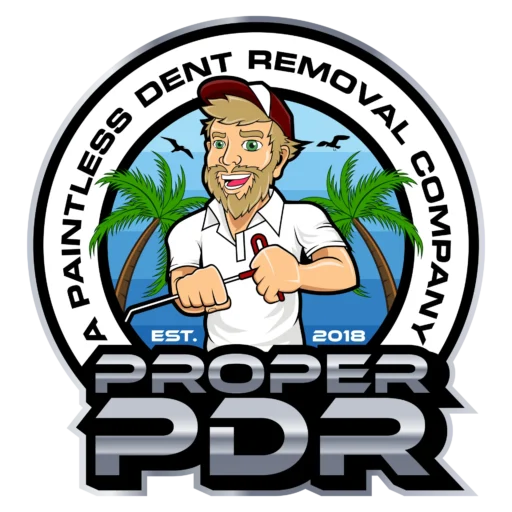
At Proper PDR specializes in mobile Paintless Dent Repair (PDR) and Paintless Dent Removal in Irvine, Trabuco Canyon, Newport Beach, Laguna Niguel, Aliso Viejo, and Dana Point. With years of experience, we ensure every dent is meticulously removed while preserving your vehicle’s factory finish. Trust Proper PDR for top-tier dent repair and exceptional service.
